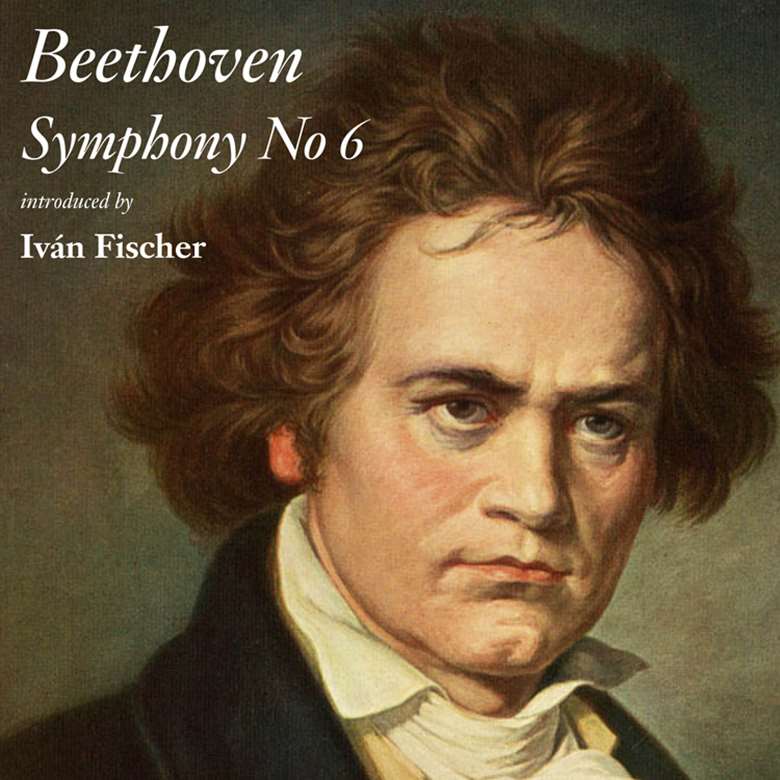Beethoven's Symphony No 6, introduced by Iván Fischer
Gramophone
Monday, October 20, 2014
For this conductor, the ‘Pastoral’ Symphony represents the individual’s liberation through nature

I have had the opportunity to perform full cycles of the Beethoven symphonies several times in the past few years and, when you look at the full group, it’s the Sixth Symphony that stands out as an exception. It is literally an excursion: someone who usually lives in a large city takes the time to go into the countryside. It makes the piece extremely difficult in many aspects. We are very fortunate that Beethoven gave titles to the movements so, for instance, we know that the third movement is about the people on the land and folklore, and therefore it should feel rustic; and the final movement is about gratitude after a storm. These clear indications are unlike any other Beethoven symphony. How good it would be to have similar insights into, say, the Fourth, Fifth or Seventh Symphonies! Another, even more major aspect that makes the piece so special is that it is a relief from everyday life, an expedition and escape into the countryside or the woods.
The first movement sets the style, with continuous repetition of a very pleasant motif. The second movement then contains complicated repetitions of something very similar, which is most unusual from a compositional point of view. Beethoven started this repetitive technique in the Third and Fourth symphonies, especially in the Fourth, where he repeats the same musical material again and again, in different keys and different forms, but it’s still a repetition. Many people believe it was the American minimalists who invented this, but no, it was Beethoven. In this symphony it receives a meaning for the first time, especially in those first two movements. We learn that it is not man but nature that creates this ostinato. When I perform it, I always feel that, were we to do it in a normal, conventional manner, we might miss something. It feels to me that the composer is saying, ‘Let’s do something else this time!’
Both in live performances and in my recording of the work, I have separated up the wind players, sprinkling them amongst the strings. The idea originally came from the second movement, but I have used it throughout the piece. This way, the wind soloists are all surrounded by Beethoven’s nature music but, most importantly, they are able to listen to their colleagues in the string sections, and hear their phrasing constantly. Both symbolically and practically, this adds to the sense of a change of scene. This approach sometimes gets criticised, for instance when we had a tree placed on the platform of the Royal Festival Hall and arranged the players around it. I did this to help underline the point that this is not an ordinary symphony. Most of Beethoven’s works have the dual theme of tragedy and jubilation; and he was, of course, very preoccupied with ideas of freedom and liberation. The end of the Fifth Symphony is akin to the end of Fidelio, but this is a visionary, green symphony. It represents a different type of liberation, from beginning to end: a liberation by and through nature. The final happiness is a bit pantheistic, influenced perhaps by the philosophy of Spinoza.
Beethoven stepped out of the Classical tradition between his Second and Third Symphonies, but there is a relationship here with the ‘pastoral’ musical forms of the 18th century, a century that was just coming to its close. The Ninth Symphony is about the continuation of the French Revolution; and Beethoven found a way of putting into music what the crowd felt, the sense of freedom that came with storming the Bastille and throwing away the aristocracy and the feudal system. The aspiration of being freed involved overturning the social order. That was freedom in the city; this symphony is about the very different freedom we can experience by leaving the city altogether. The Ninth Symphony literally did change the world by being so grand, so jubilant: it steps out of the boundaries of music. In the Sixth Symphony Beethoven explores a simpler kind of freedom, one involving total harmonic happiness. The Pastoral Symphony happens inside us. There is an internal, mental exercise at work, as the simplicity of nature creates strong feelings – and Beethoven was interested in those feelings that nature awakens in us.
At the beginning of the finale, as the shepherds express their ‘happy and grateful feelings after the storm’, the song begins with a solo clarinet and then a solo horn, creating a sense of individuality. I like to continue that when the first violin line initially appears with the famous melody of the finale, with the concertmaster creating a kind of ‘naked melody’, with the remainder of the strings joining in gradually. If the full group plays from the first note, of course that can work too, but sometimes one person can say more than a group of people can. Whereas Beethoven’s Ninth Symphony is about the liberation of the crowd, the Pastoral is more about the liberation of the individual. And this is a liberation that comes about through the strength and beauty of nature.
Interview by Michael McManus











